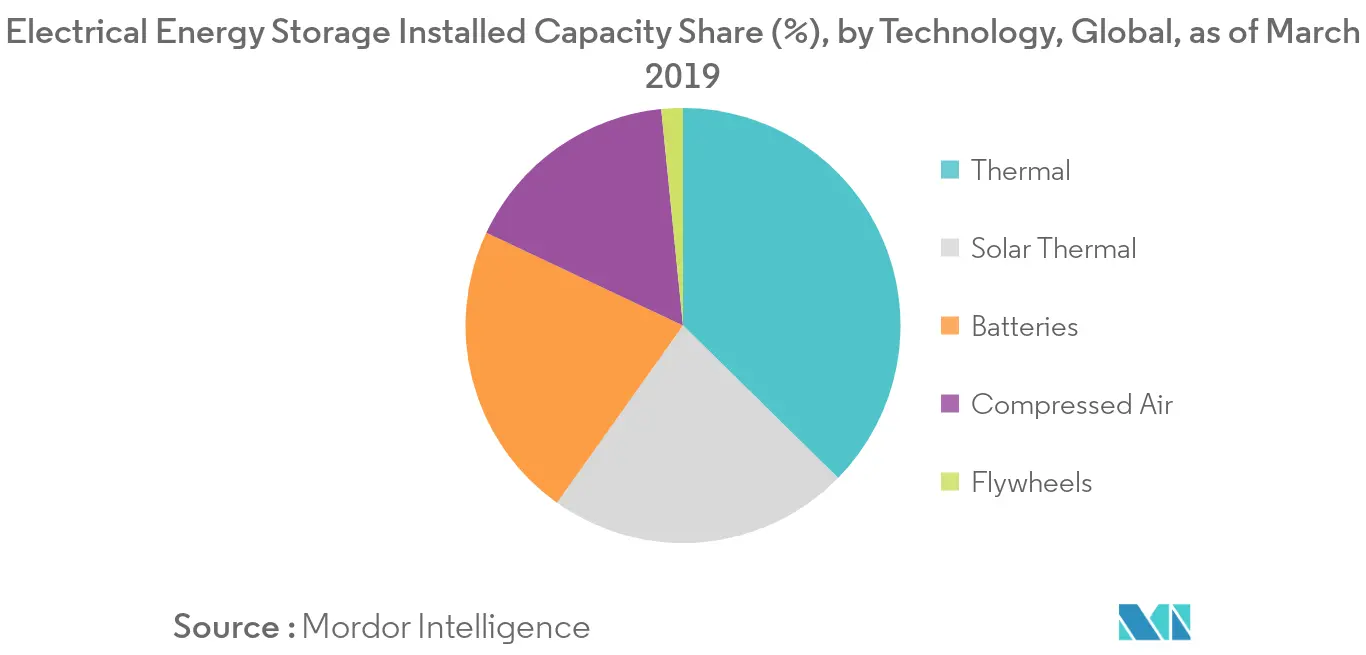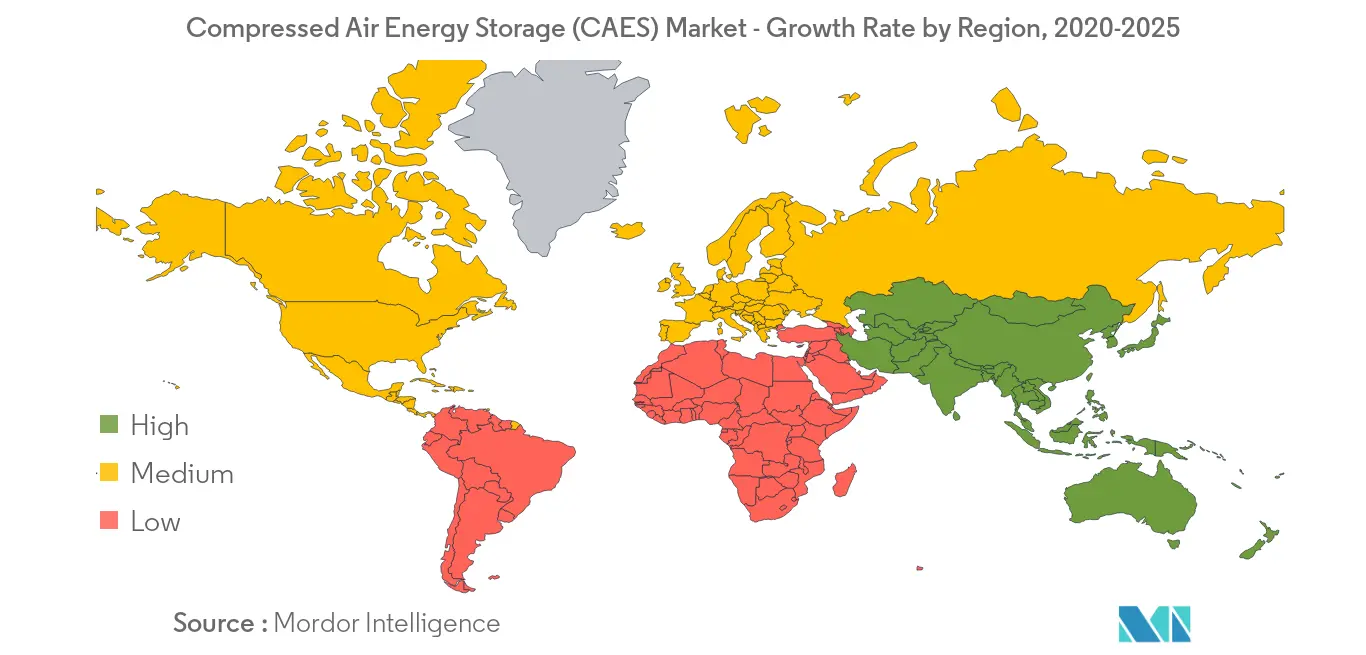Market Trends of Compressed Air Energy Storage (CAES) Industry
This section covers the major market trends shaping the Compressed Air Energy Storage Market according to our research experts:
Diabatic CAES Technology to Dominate the Market
- The diabatic compressed air energy storage plants are a conventional type of systems, where, during the compression process the excessive heat generated is released to the atmosphere. During power generation, the required heat is generated generally using the natural gas.
- As a result, the diabatic compressed air energy storage systems, though simple and relatively less costly, have lower efficiency, and are less environment-friendly than other types of compressed air energy storage systems. The diabatic compressed air energy storage systems achieve an efficiency of around 50%, significantly lower than the other upcoming technologies.
- In 2018, the diabatic compressed air energy storage systems are the only type of systems that have been deployed for commercial purpose. The first diabatic compressed air energy storage plant, Huntorf compressed air energy storage plant, was built in Germany, in 1978. This compressed air energy storage plant has the capacity of 298 MW and efficiency of only around 40%. The second plant was built in Alabama, United States, in 1991, with a capacity of 110 MW and efficiency of above 50%. The adiabatic systems achieve efficiency about 20% more than the diabatic systems.
- The operating cost of the diabatic compressed air energy storage plants is significantly lower than the adiabatic and isothermal compressed air energy storage plants. As a result, the diabatic plants are generally more profitable to operate. However, as the plants require gas-firing for operation, the diabatic plants are less ecological. As the concerns regarding the climate change are rising globally, the other compressed air energy storage plants are being preferred over the diabatic plants.
- With the development in other technology, the share of diabatic compressed air energy storage systems in the market is expected to decline during the forecast period. Among the announced compressed air energy storage projects worldwide, none of the major projects use diabatic technology. A similar trend is expected to continue during the forecast period, which, in turn, is expected to restrain the market growth of the diabatic compressed air energy storage systems market.

North America to Dominate the Market, in Terms of Number of CAES Projects
- The United States power sector is in the midst of profound transformation with the fast-paced replacement of coal-based electricity generation with natural gas. Owing to decreasing costs and vast environmental benefits offered, renewables integration has also picked up at a very rapid pace.
- In a bid to ensure the stability of the aging power grid of the country, large-scale implementation of energy storage systems is being considered critical. Moreover, with the country trying to decarbonize the economy, considering the environment, the share of renewable for power generation is expected to increase. With the increase in the country's reliance on renewables for energy demand, an uninterrupted supply of power is necessary and owing to renewables being heavily reliant on prevailing weather conditions, a need for efficient energy storage is expected to increase, during the forecast period.
- With compressed air energy storage solution providing a viable technology for use, the market is expected to grow once the countries start to recover from the recent COVID-19 pandemic. In the United States, as of June 2018, there were 3 operating CAES systems, with a combined rated power of 113.5 MW.
- However, certain projects, such as Iowa Stored Energy Park (ISEP) project, Iberdrola United States, Norton Ohio CAES, and LightSail company I-CAES were seized before commercialization.
- The seizure of certain projects clubbed with the recent pandemic, which has resulted in the highest number of cases in the United States, has a potential to inflict the growth momentum of the market. With vaccines not expected to be developed before the start of 2021, the pandemic is likely to halt the economic activities which may decrease the power demand and thereby the need for CAES projects for energy storage.
- With the low demand of CAES project, the new investments are likely to be halted and ongoing projects are expected to be delayed, thereby restraining the growth of the market during the next two year.


